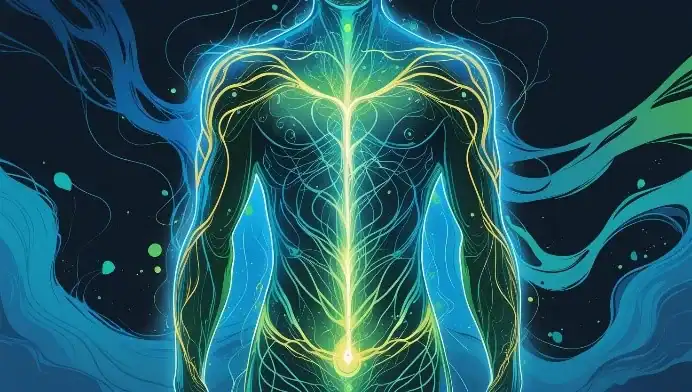By: Jennifer Bailey, LCSW & RDT
“His palms are sweaty, knees weak, arms are heavy. There’s vomit on his sweater already, mom’s spaghetti.”
You probably guessed it, Eminem’s song “Lose Yourself”. From these first two lines, it’s clear the person described is anxious. Have you ever felt butterflies in your stomach or noticed your heart racing? These sensations are examples of the body’s response to emotions.
To better understand our emotions, we need to know where emotions live in our bodies. According to Six Seconds: The Emotional Intelligence Network, emotions are “based on our interpretation of an event, a chemical response from the brain is created and goes to the rest of the body, lasting about six seconds.” Building a strong foundation of emotional intelligence starts with an understanding of how emotions are generated, where they travel in our bodies, a process rooted in the nervous system.
Emotions and the Nervous System
Your nervous system is made up of your brain, spinal cord, and nerves. According to the Cleveland Clinic, its “main function is to send messages from various parts of your body to your brain, and from your brain, back out to your body, to tell your body what to do.” It controls everything from digestion to emotional responses. The Polyvagal Institute explains that when there is a perceived threat, the nervous system engages in at least one of three survival reactions: fight, flight, or freeze. PsychCentral.com adds a fourth: fawn. These responses are automatic, not consciously chosen.
For example, imagine walking down the sidewalk and seeing a dog growling at you, and its body language suggests it’s ready to attack. In that moment, your body may react by fighting back (fight), running to safety (flight), freezing in place (freeze), or offering the dog a treat or toy to reduce the threat (fawn). For individuals with a history of trauma, especially generational trauma, survival mode can become a daily way of functioning, not just a reaction to emergencies.
When the brain and nervous system remain in a constant state of survival mode, the body prioritizes protective measures. This often limits emotional awareness, insight, and connection with others. In the moment, survival mode may appear as:
- Fight may look like anger, control, or defensiveness.
- Flight may look like panic, avoidance, or anxiety.
- Freeze may look like dissociation (spacing out/getting distracted), procrastination, or “shutting down”.
- Fawn may look like people pleasing, codependency, or a lack of boundaries.
Acknowledging feelings in your body is not a weakness, It’s an act of wisdom and self-awareness. This practice builds resilience, making it easier to navigate life and deepen the connection with ourselves and our relationships with others. Over time, we can deepen the link between brain and body, increasing our awareness of emotional states.
Tips for Building Emotional Connection:
- Breathing: Mindful breathing can help calm your nervous system when in survival mode.
- Movement: Movement is a helpful way to release emotions living in the body.
- Mindfulness: The practice of staying present in the moment helps with emotional regulation and keeping your nervous system calm.
- Expressive arts: Painting, dancing, music, and other forms of art can help bring about emotional awareness when we can’t find the words.
- Journaling: Reflecting on your thoughts and feelings at the end of your day will help build emotional awareness
- Therapy: Seeing a therapist can help you with building emotional awareness and expression.
Takeaways:
- Intense emotions can generate strong physical sensations, but they remain internal processes we can choose not to express outwardly.
- The nervous system’s purpose is to send messages between the body and brain, directing how the body responds.
- When facing a perceived threat, the nervous system engages in one of four survival reactions: fight, flight, freeze, or fawn.
- Constant survival mode shifts the body’s focus to protection, reducing emotional awareness, insight, and connection with others.
Jennifer Bailey is a wife, mother of three, and therapist. She is a Licensed Clinical Social Worker (LCSW) and Registered Drama Therapist (RDT).





